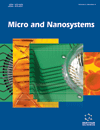
Full text loading...
Aerosols are fine particles in the atmosphere produced by nature or man-made like fog, forest exudates, industrial emissions, biomass burning, and dust. Aerosols can change the earth's climate, and the formation of clouds, and may reduce the rain as they circulate in the atmosphere. Black carbon, also called soot is the dominant form of particles in the atmosphere which absorb light. They are fine particles and are smaller than dust and mold particles. Poly-aromatic hydrocarbons in soot particles result in substantial health complications even at small concentrations. Atmospheric pollution is an interesting subject as it is related to the problem of global warming. Particularly carbon aerosols can decide the condition of climate since the oxidation of these particles will result in the toxicity of atmospheric particulates. The processes involved in the atmosphere can be predicted through the analysis of these aerosols. Black carbon absorbs light of short wavelengths, and it enters into the stratosphere which causes climate change. The properties of black carbon obtained from various measurements provide information about the atmosphere's constituents. Raman spectroscopy is widely used for the identification of functional groups of atmospheric aerosols. The formation and properties of carbon aerosols obtained through these techniques will be used to explain the oxidation and particle-phase reactions of carbon aerosols. Carbon aerosols affect human health because of various factors such as chemical aging. In this review article, carbon nanoparticles present in the atmosphere, the analysis of those particles using Raman spectroscopy, and their implications on human health as well as climate change are discussed through various reports.

Article metrics loading...

Full text loading...
References


Data & Media loading...

